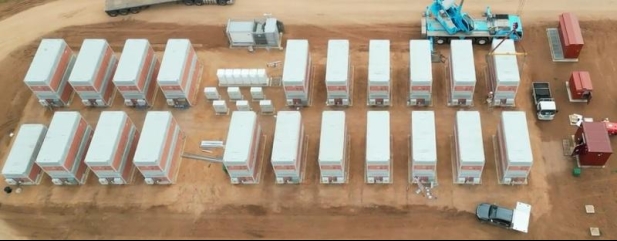Archived article
Please note that tax, investment, pension and ISA rules can change and the information and any views contained in this article may now be inaccurate.
The little company with big ambitions in energy storage

As Martin Gamble discusses in this issue, some businesses are awaiting the upcoming Budget on 30 October with real trepidation. However, an announcement from the Labour Government was cause for celebration with one smaller company when this author had the opportunity to meet with them in early October.
Flow battery technology firm Invinity Energy Systems (IES:AIM) has had a tough little spell due to delays with some projects hitting revenue projections – something of an occupational hazard for emerging businesses – but it sees reasons for real optimism on the back of recently announced support for long-duration energy storage.
Longspur Research analyst Adam Forsyth says: ‘The UK Government has confirmed it will support long-duration energy storage projects though a cap and floor revenue support model potentially with a soft cap. The electricity regulator, Ofgem, will run the programme.
‘Ofgem will need to collect further information before it can confirm details of the investment framework. A technical decision document will be published “this winter” with final decisions expected to allow Ofgem to open a scheme to applications in 2025.’
The belief is Invinity could benefit from this support in time. The company is focused on creating and selling flow batteries, which are designed to store energy for long periods. In this way they can provide a solution to the intermittent nature of renewable energies like wind and solar. Unlike traditional batteries which might degrade quickly, flow batteries use liquid electrolytes, in theory making them more durable and more efficient for large-scale energy storage.
Visiting the company’s recently-acquired new facility in Motherwell, its VS3 unit does resemble a simple shipping container. However, there’s a fair amount of intellectual property which goes into these units in the form of the cell stacks which sit within it. These are developed in partnership with Gamesa Electric, a wholly owned subsidiary of Siemens Energy (ENR:ETR).
The cell stacks are put together at the company’s site in Bathgate and shifted across the Central Belt to Motherwell where the VS3 is assembled in a near-100-year-old facility which used to make bridges in the region’s industrial heyday. From there it is transported across the globe, with Invinity batteries currently in use in the UK, North America and Australia.
For the end user, the VS3 is designed to be fairly simple and rather than requiring significant set-up on site, unlike other flow batteries, is more or less ready to be plugged in when it reaches the customer. The new Mistral product uses much of the same technology as VS3 but scaled up to allow it to be employed for larger projects, and includes refinements aimed at reducing costs including short-side access for maintenance and assembly. Its launch is expected before the end of the year.
The company is confident it can reach its target of being free cash flow positive by 2026 without having to come back to the market. Even if chief executive Jonathan Marren (who stepped up from chief finance officer in September) admits to Shares that having greater resources than the last reported £49 million of net cash would help it expand quicker. On a side note, this is more than the company’s current market valuation. I, for one, will be watching how this story develops with interest.
Important information:
These articles are provided by Shares magazine which is published by AJ Bell Media, a part of AJ Bell. Shares is not written by AJ Bell.
Shares is provided for your general information and use and is not a personal recommendation to invest. It is not intended to be relied upon by you in making or not making any investment decisions. The investments referred to in these articles will not be suitable for all investors. If in doubt please seek appropriate independent financial advice.
Investors acting on the information in these articles do so at their own risk and AJ Bell Media and its staff do not accept liability for losses suffered by investors as a result of their investment decisions.
 magazine
magazine








